Springfield Armory is well-known for its broad line of 1911 pistols, but their XD brand of striker-fired pistols has acquired huge traction. I recently purchased a brand-new XDM with a 3.8-inch barrel chambered in.45 ACP, which I used for this review. We have provided this review for those who are thinking about purchasing an XDM handgun. Now, let’s begin.
Springfield XDM Compact .45 ACP Specs
| Model | DM 3.8-inch compact .45 ACP |
| Caliber | 45 ACP |
| Capacity | 9+1 rounds; 13+1 with X-Tension |
| Sights | Dovetail front and rear (steel) 3-dot |
| Weight | 27 oz. / 28 oz. |
| Length | 6.9 inches |
| Height | 4.75 inches / 5.75 inches with X-Tension |
| Grip Width | 1.26 inches |
| Barrel | 3.8-inch steel Melonite fully supported ramp |
| Slide | Forged steel |
| Frame | Polymer |
| Trigger Pull | 5.5 to 7.7 pounds |
Springfield XDM Compact History
The gun we know as the Springfield Armory (from now on SA) XD pistol started out life as the HS-2000. This was a pistol made by the H.S. Produkt company in the city of Karlovac, Croatia in 1999 which in turn was based on the HS95 (Hrvatski Samokres or Croatian Pistol) that was introduced in 1995.
The HS2000 was adopted by the Croatian military and law enforcement agencies — it is still used by those bodies today. It was brought to the U.S. and distributed by HS America as the HS2000 in 9mm. (for your geography and history buffs, Croatia gained its independence from Yugoslavia in 1991. It is situated on the Adriatic Sea).
In 2002, SA negotiated with H.S. Produkt for rights to sell their gun in the U.S. It was introduced on this side of the pond as the XD (eXtreme Duty).
In 2006, the XD 45 was named the Handgun of the Year by the American Rifleman magazine and the Shooting Industry Academy of Excellence. The XDM series (introduced in 2006 originally in .40 S&W) won Handgun of the Year in 2009. In 2012, the XD-S (slim) single-stack model was introduced in .45 ACP with the 9mm version coming the following year.
These guns are only an inch wide, which aids in concealing the pistol. The XD Mod. The company introduced the 2 series in 2014, which increased the number of XDs you could buy to 33. This series has a redesigned grip, with a stippling-like texture and three distinct “grip zones” ranging from smooth to rough, depending upon which sector of the grip you’re looking at.
Other modifications were made, such as including a fiber optic front sight. The basic pistol remains pretty much the same, with a few exceptions. And, in a very recent development, SA just debuted two XD pistols in 10mm, a move eagerly anticipated by many shooters.

The M Factor & Features
What does the M stand for? Here are a few of the M factors, according to Springfield Armory.
- Match-grade barrel.
- Model Contour frame: the familiar 1911 grip angle is still there, but certain areas of the frame have been contoured and relieved, most notably the upper grip area and backstrap to allow access to controls without breaking your grip.
- Mold-Tru backstraps: included with the gun are three backstrap inserts. Small (marked with a I), medium (II) and large (III) interchangeable backstraps are in the box. They let you fit the grip more closely to your hand. They slip in at the bottom of the grip and are held in place by a roll pin.
- Maximum-Reach Magazine Release: the frame has been relieved around the mag release to allow easier access to it.
- Maegacapacity Magazine: my .45 XDM comes with a flush-fit 9-rounder and an extended 13-rounder. If you are shooting the 9mm, you get one 13- and one 19-round magazine; the .40 S&W comes with 11- and 16-round magazines.


- Mega-Lock texture: very knobby and aggressive, with different patterns in different areas to solidify your grip. It works, at least for me.
- Multiadjust Rail System: multi-position Picatinny rail.
- Minimal-Reset Trigger: the trigger resets very close to the rear of the frame. It is shorter than a lot of similar guns’ resets and allows fast follow-up shots.
- Melonite Finish: tough, long-lasting finish. It was incorporated in 2006 and is essentially the same finish as Glock’s Tennifer finish, according to industry experts. Both are very impervious to rust and usage wear and tear.
- Minimal Error Disassembly: drop the mag, make sure the chamber is empty and lock the slide back. Flip the takedown lever up, release the slide, and off it comes. No trigger pull is needed.
Some of these M factors are SA marketing department hype but no matter how you name them or describe them, they do combine to add up to a gun that works. The M guns are an improvement over the plain-jane XD, especially when shooting semi-wadcutter (SWC) bullets.
The original XD would not feed SWCs reliably but the XDM does, due to a modification made to the center feed rail on the underside of the slide. This is just one example of how they made things better for shooters by listening to those shooters’ comments as opposed to just giving lip service to them. Other features of the XDM that sold me on it include:
Grip Safety: Love it or hate it, it’s there. When not depressed, the gun won’t fire nor can you retract the slide. With my hand size and grip, it’s a non-issue.

Striker Status Indicator: A small, white-colored pin (for lack of a better word) protrudes from the back of the slide when the striker is cocked. You can feel it by running a finger over the slide’s rear plate and tell if the gun is cocked, even in the dark.

Loaded Chamber Indicator: A bar located at the rear of the ejection port is levered up when a round is in the chamber, allowing you look at it or run a finger over it to check if the chamber’s loaded (even in the dark, as above).
I have only put a little over 200 rounds through my gun so far but it’s important to note that I have used the striker status indicator and the loaded chamber indicator several times to ascertain the readiness of the gun to fire. And, I checked it by feel, in daylight. To me, these two features are very useful.

Ultra Safety Assurance Trigger Safety: A fancy way of saying the trigger has a blade installed in its face that won’t let the gun fire unless the trigger is pulled, a form of drop safety. This feature is found on many striker-fired guns today. (The third integral safety is the striker block safety that will only allow the striker forward with a trigger pull).
Fiber Optic Front Sight: The front sight uses a fiber optic rod to gather light. Included with the gun are red (installed), orange, and green (included) rods that you can swap out for the one installed. Night sights are available, and my aging eyes appreciate this brighter sight.

The rear sight is a two-dot, drift-adjustable steel sight with a machined face so that glare is broken up.

Ambidextrous Magazine Release: My left-handedness really appreciates this feature. No need to move the release to the right side as it’s already there.

Frame Sculpting and Replaceable Backstraps: The XDM frame, sculpted as mentioned above, fits my hand perfectly. This is due to the carving away of parts of the frame that would’ve caused my medium-size hands’ problems reaching around the grip, problems like I had when I owned a Model 30 Glock. The S/M/L backstraps let you further fine-tune the fit of the gun to your hand. They even include two extra extended magazine grip extensions for any full-size mags you may buy.

Magazine Capacity Variety: Included with my .45 XDM were flush-fit 9-round and extended 13-round magazines, with two extra sleeves for any extra 13-rounders out there that are available for purchase.

Semi-Wadcutter / Lead Bullet Compatibility: The Springfield XD pistol series’ barrels do not use polygonal rifling, so lead bullets are OK to shoot. About 90% of my shooting consists of putting bullets I cast myself downrange, which makes shooting more affordable for me.
BONUS OFFER: Get your free shooting range targets to print at home!
Get your free targets to print at home!
During the time of writing, I have powder-coated bullets that I made yesterday sitting on my bench waiting to be tested in my XDM. They are the Lee 200-grain tumble-lube SWC bullet. After extensive research, I found that the XDM would feed these bullets where other guns failed. This even includes the original XD pistol.
I have shot both that tumble-lube SWC and Lee’s version of Jeff Cooper’s favorite cast .45 bullet, the old Hensley & Gibbs 68 (longer nose, one deep grease groove, and a sharper shoulder) through my XDM with zero problems.
It doesn’t matter which bullet I load as long as they are seated with the shoulder flush with the case mouth, they feed reliably. I understand that this is due to a small hump built into the central feed rail on the slide bottom that depresses the top round in the magazine. The slide reciprocates, so the extracted case rim clears the on-deck bullet in the magazine.

The older XD didn’t have this hump and the extracted case would catch on the shoulder of the SWC and jam. How to tell? Pull the slide and look at that rail. If it’s flat all along its length, then SWC bullets are a no-go. The little hump, right at the breech face end of the rail is what you’re looking for in order to use SWCs. So, I’m a happy reloader and grateful that SA addressed this issue.
A Kinder, Gentler Gun: The XDM seems to be just about the softest-shooting .45 auto I’ve ever shot. I’m not quite sure where that comes from, other than the obvious reasons such as the gun fitting my hand very well, the relatively high grasp I get on the frame which helps mitigate recoil, and the recoil spring’s weight and configuration. I know, it’s not magic. It’s just a softer-shooting gun, at least for me.
Popular Articles
Shooting the Springfield XDM Compact
As mentioned above, I am a handloader who likes to experiment (Read my Reloading Guide here). I have shot the following through my new XDM as of this writing:
- 230 grain FMJ Blazer factory ammo
- 230 grain handload, cast round-nose bullet with a moderate dose of Tite Group
- 230 grain handload as above but with 231/HP 38 powder
- 200 grain handload, cast H&G 68-style SWC over Long Shot powder
- 200 grain handload as above but with Tite Group powder
- 200 grain handload as above but with 231/HP 38 powder
- And all the 200-grain loads again but using the Lee tumble-lube SWC cast bullet

I now have a batch of shiny red powder-coated tumble-lube Lee SWC bullets ready to load. My load of choice is 5.3 grains of 231/ HP 38 with that 200 grain bullet. It’s on the lower-pressure side of the handloading manual, but it makes a great practice round and doesn’t bend anything.
I like that the XDM can shoot semi-wadcutter bullets.They also cut cleaner holes than the round-nose bullets. Plus, you get five more per pound of lead over the 230s, for those of you who keep track of such things.

The grip ergonomics, recoil spring configuration and high hand-hold on the frame all have something to do with the soft-shooting part. Plus, the internal design changes help immensely when I shoot my handloads. It all comes together and works well for me.
A Work In Progress
There was no break-in period for the Springfield XDM Compact, unlike other guns. I took it out of its box, cleaned it a bit and lubed the slide rails then I went out and shot it. It worked fine. The only malfunction of any kind was due to my ammo, not the gun’s fault. It doesn’t like light target ammo, and it had a little trouble ejecting the empty case.
There was not enough oomph to function the slide completely. Once I figured out a reasonable load, it ran very well with not one stoppage. With reliable reloads or factory ammo, you’d better bring your lunch because you’re going to be there all day shooting.
For 1911 guys and gals, the grip angle of the XDM is very close to that of Ol’ Slabsides. You most likely wouldn’t need to adapt your grip too much to feel at home with the XDM.
BONUS OFFER: Get your free shooting range targets to print at home!
Get your free targets to print at home!
Springfield XDM Compact Take-Down
If you look at the photos, you’ll see the gun in its various takedown stages.
1. Make sure the chamber is empty and the magazine removed.
2. Once truly cleared, pull the slide back and lock it with the slide stop.
3. Turn the take-down lever up from its 9:00 to a 12:00 position.

4. Release the slide and remove it from the frame, sliding it off the rails.

5. Remove the recoil spring.

6. Remove the barrel.

After cleaning all the fouling off (see below), check your reflection in the polished feed ramp. OK, that’s a joke but is based in fact. SA puts a mirror-like polish on their feed ramps.

I have always admired that feature, as it helps feed whatever type of ammo you put in the magazine and it saves me from having to polish it myself. The XD pistols (and most other SA products) have the most highly-polished feed ramps I’ve ever seen on production guns.

7. Notice what step you did not see? The pull-the-trigger-to-release-the-slide step. The XDM does not require a trigger pull, but the Mod. 2 guns do.
Should I Clean My Springfield XDM Compact?
Even if I shoot five rounds over a chronograph, I’ll at least wipe it off and run a quick patch down the barrel. I occasionally read in the gun forums or see on YouTube videos guys who say they’ve never cleaned their gun since they bought it although it’s had five gazillion rounds through it.
Guns are meant to be cleaned after shooting, or else companies wouldn’t spend time, ink and paper to create owner manuals.There are too many variables involved that could go south an instant when you shoot a gun that, say, had been dunked in a bucket of mud. All it takes is one tiny bit of grit in the bore to make you wish you really hadn’t done that. So, clean your Springfield XDM Compact at least once in a while.
Springfield XDM Compact Cleaning Process
You need to remove fouling (copper and powder, or lead if you shoot lead bullets) from the barrel, slide, and adjacent areas. The next steps are the following.
- Take the gun apart as described above.
- Run a .45-caliber brass bristle brush (Best Gun Cleaning Kits) soaked in Hoppe’s or your favorite solvent through the barrel from the breech end. Make sure to pay special attention to the chamber and barrel grooves.
- Do this several times. Some folks won’t pull the brush back through the barrel. Instead, they’ll unscrew it and just push it one way. Whether or not to do this is up to you. I’ve not had any adverse effects by not unscrewing the brush.
- Examine the bore, as much as you can as it will be very wet & dirty. Run as many clean patches through the bore until the last one comes out clean. You may use another brass bristle brush with the patch draped over it, that it will push against the grooves by spring action of the bristles and it really gets the barrel clean. There are a ton of tools and methods you can use to clean your barrel. Whatever method you use, you should be able to hold the muzzle end of the barrel up to a light and look into the feed ramp end and see a clean, shiny barrel after a few wet-then-dry patches have been run through it.
- Take a clean rag and dampen it with a bit of your solvent-of-choice. Wipe around the firing pin hole in the breech face and anywhere else you see black fouling. The trick is to get all the grunge out or off the surfaces. An old toothbrush. or a similar brass brush is good at getting under the extractor and into nooks & crannies where a rag can’t go.
- Wipe off the barrel exterior and feed ramp.
- Usually, the recoil spring doesn’t need much attention but you can wipe it off with solvent if you like.
- Check the underside of the slide. The central rail, striker disconnect button and the inside-top of the slide where the barrel rides should be wiped off. It is important that the central (feed) rail is very clean and has no machine marks, burrs, etc. on it. A slick rail can be very beneficial.
- Once the slide, barrel and spring are clean, look at the frame. Wipe off any obvious fouling around the ejector and the inside-rear part of the frame. Being clean is good here, for sure.
- The frame rails need special attention, both on the frame and the slide.Take a toothbrush or Q-tip and clean the slide rail grooves until the cleaner comes out clean. Do the same to the frame rails, but use a fresh Q-tip. Dirty, fouled rails can contribute to sluggish slide action, which might in turn cause malfunctions so keep ‘em clean.
- Put one drop of good gun oil in each of the four frame rail slots and wipe off the excess. Some owner’s manuals will have you put a drop of oil at the rear of the frame where the springs are. Just follow the instructions on your manual. Remember, a drop is a drop, not a glug. The same applies to the striker spring in the slide. You’re better off not coating that in oil. Whatever you do, don’t drown the firing pin channel in oil. It will get progressively more sluggish and then most likely will start causing misfires, especially if you live in a dusty environment. Leave it alone. Wipe all internal parts off to remove excess oil and solvent. (For a good guide to gun oils and lubes, check this article out).
- Reassemble the XDM and wipe off any extra oil. That’s it. The finish is really tough and impervious to rust, but I still like to use one of those great rags that Ruger sends out with their guns to wipe the pistol with, mostly out of habit. It can’t hurt anything.
- Secure the gun safely — lock it away unless you have a reason not to. Gun security, like removing barrel leading, is a whole different article. So, just keep it safely stored.
Springfield XDM Compact Warranty
SA, in their printed material that came with the gun, said they would warrant the gun to the original owner as long as that owner owns that gun. Read about it here.
That’s a win/ not-so-sure-I-win proposition. If you’re the original buyer and you keep the gun, you’re good to go. If, on the other hand, you buy it used then SA can legally refuse to service the gun as a warranty claim. This is the only part of the SA experience that I don’t really like.
Most of the other major manufacturers will fix their guns for free (within limits) no matter if you’re the first or thirty-second owner. That is how gun makers win friends. I doubt if the warranty is a deal-killer but I wish SA would re-think their strategy.


Wrap Up of the Springfield XDM Compact Review
In the end, what you have with an XDM is a heck of a gun with a lot of features for the money. Without rehashing all the pluses, let’s just say that I looked at several different guns before buying and settled on this one.
As I said earlier, I’m no expert but I do enough research and have had 40-plus years of experience where handguns are concerned and I think I know a good thing when I see it. When you factor in the free-range bag-three-free magazines promotion until the end of 2018, it’s a double-win situation.

As I stated above, this is the most accurate, softest-shooting .45 I’ve ever owned and I recommend it.

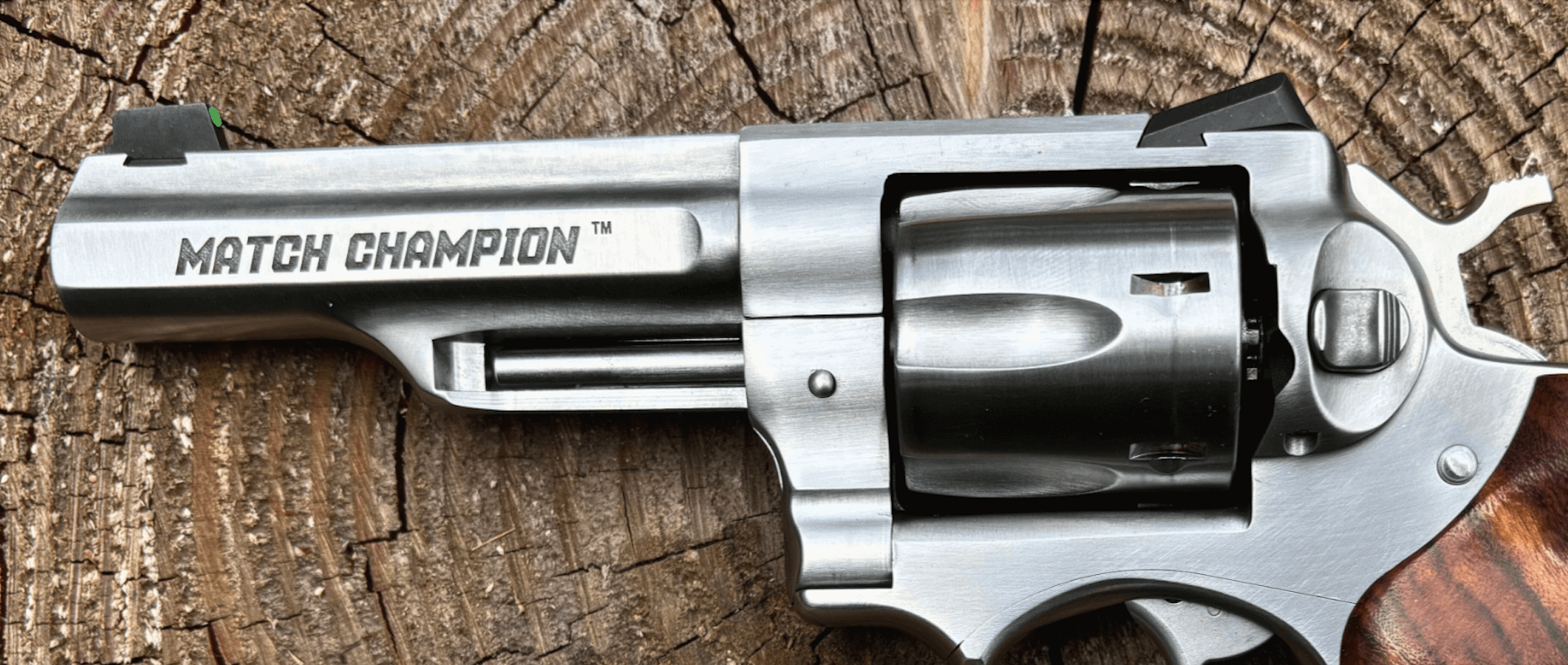




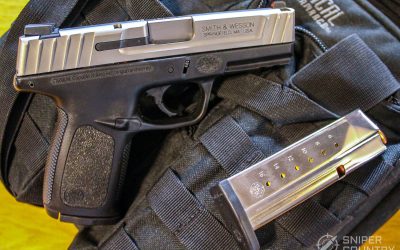
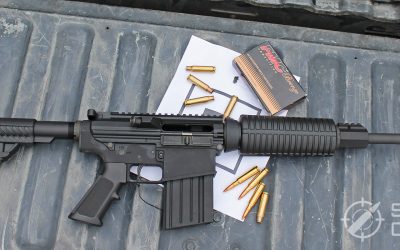


![9mm Glock Models [Ultimate Guide]](https://snipercountry.com/wp-content/uploads/2018/10/Glock-17-vs-Glock-19-vs-Glock-26-vs-Glock-41-vs-Glock-43-WM-400x250.jpg)
![Handgun Caliber Chart [2025 Ultimate Guide]](https://snipercountry.com/wp-content/uploads/2018/10/Handgun-Caliber-Comparison-400x250.jpg)
![Rifle Calibers [Ultimate Guide]](https://snipercountry.com/wp-content/uploads/2018/12/Header-1900-400x250.jpg)




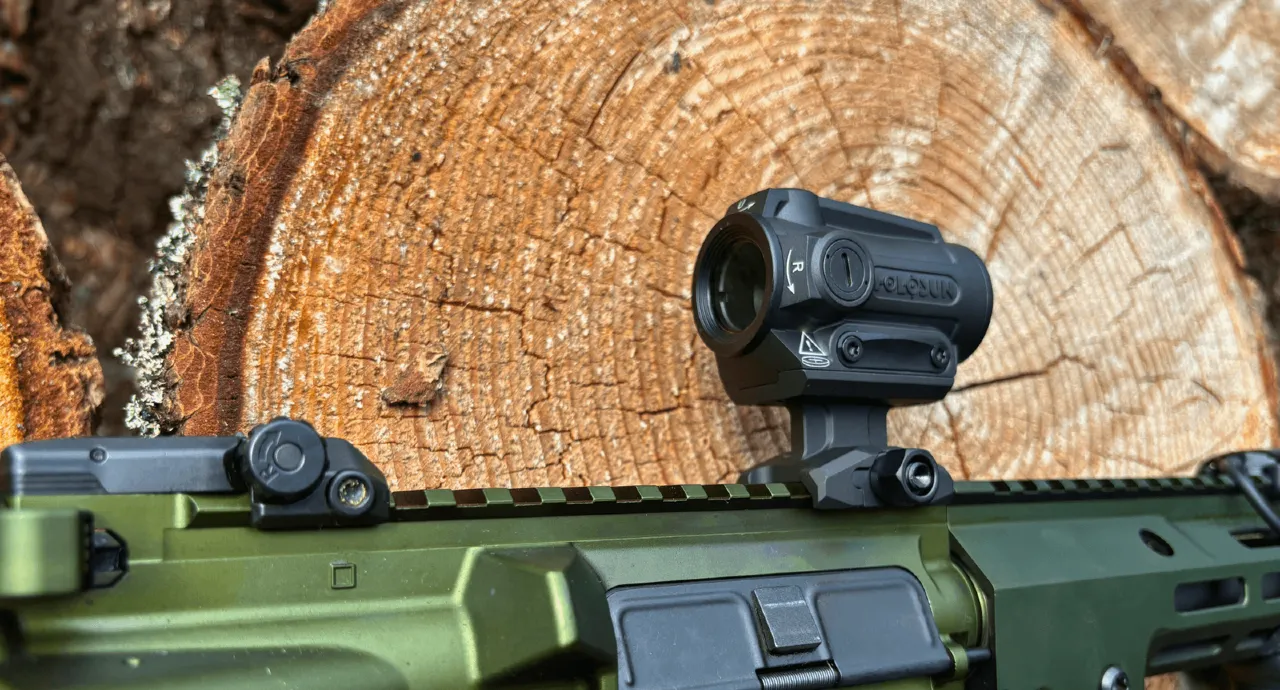

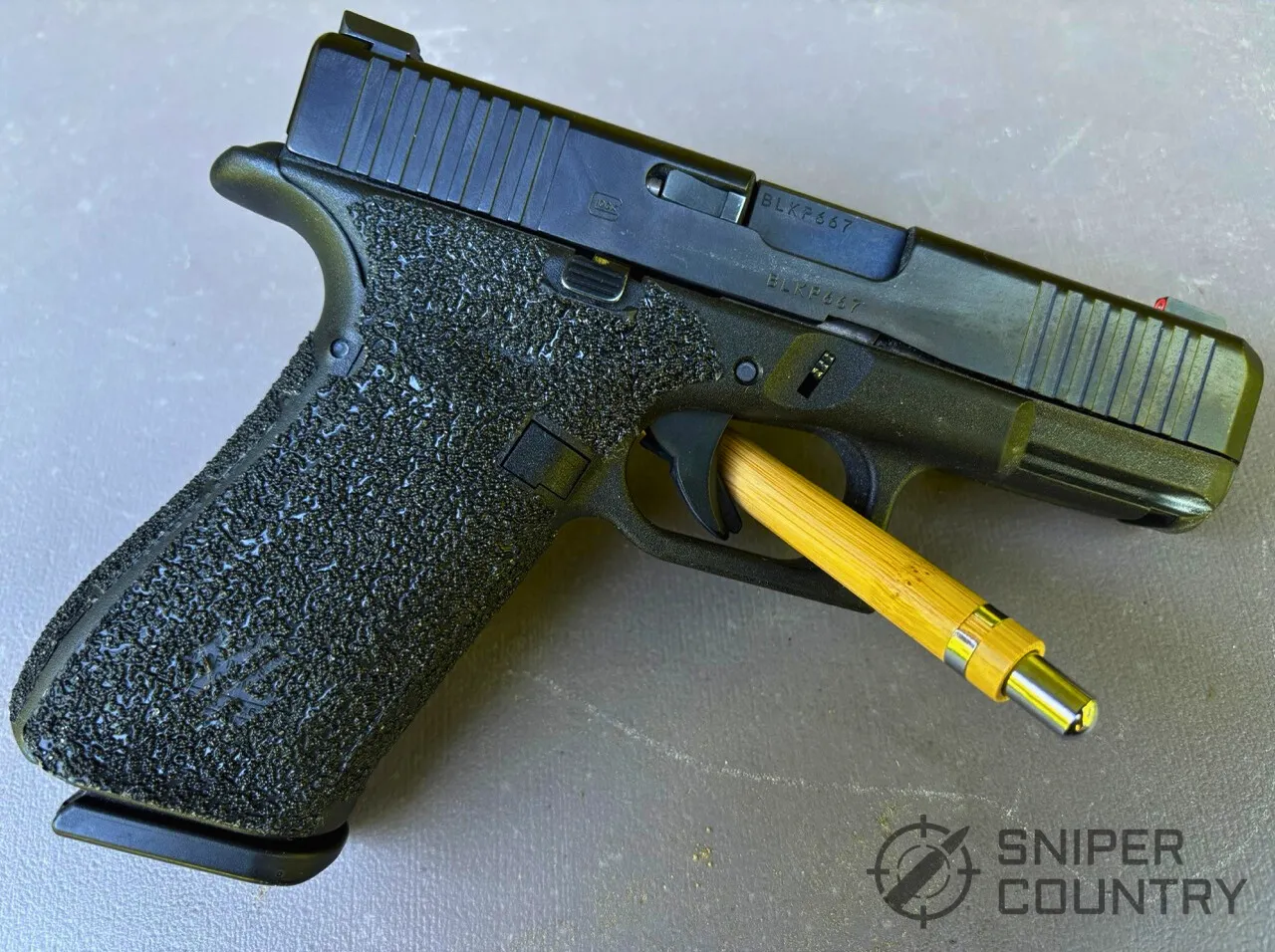
4 Responses
There are no comments? That was a great write up Mike.
I too did a lot of research which lead me to this gun. The capacity the quality control and the fact that one gun can flex into so many different areas. I scoured the internet looking for a new one for months and I finally came acrossed one and bought it.
Thank you Mike for a insightful and in-depth review
Fran, I appreciate your comments. I agree – the XDM is one versatile gun. Glad you could find one. Thanks for writing!
I love mine as well. I have had to replace one of the small springs, but otherwise has worked flawlessly. More accurate than I am and fits both mine and my wifes hands. Appreciate the article.
Thanks,
Mark
Hey Mike ,
Thanks for this informative post As a novice, I did my research and agree, the .45, 3.5x XDM, is the versatile CC and other option pistol. Two questions; racking the gun is harder than other guns I have used. Is this because it is a .45 spring? Also, mag release difficult on right side ( I am right handed). Is this typical?
Thanks, Cory.
Happy Independence Day!